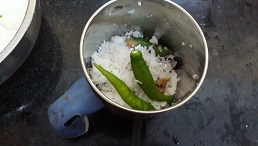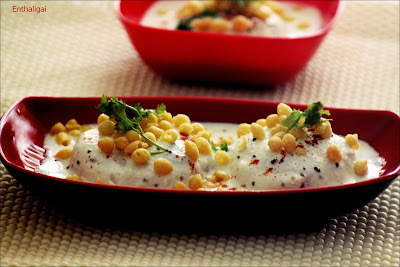This is a very popular Iyengar recipe which is very
traditional among brahmin household.
This is different from the regular sambar rice. This is a no onion and no garlic recipe. Many would have tasted this as "Prasadham"
from Perumal temple and would have wondered how they get the unique taste. The combined taste of different native
vegetables cooked with freshly ground Indian spices gives an irreplaceable
taste which is owned specially by Iyengar cuisine. Here's the recipe below.
Ingredients:
Cooked Rice - As needed
Tamarind (lemon size)-
soaked in warm water
Mixed vegetables (Pumpkin, cluster beans, beans, broad
beans, carrot, potato, chayote squash, brinjal) - 3 cups
Tomato (optional) - 1 or 2.
The original recipe will not call for tomatoes.
Gingely oil - 2 tsp
Salt - As needed
To roast and grind
Asafoetida- small piece
Toor dhal - 3 tsp
Bengal gram - 3 tsp
Urad dhal - 2 tsp
Green gram - 2 tsp
Pepper - 1 tsp
Red chillies - 14-16
Coriander seeds - 2
tsp
Fenugreek- 1 tsp
To Temper:
Mustard seeds - 1 tsp
Green chillies - 2 to 3
Curry leaves - few
Preparation:
1. Cook rice separately in a pressure cooker.
2. Roast and grind the ingredients given in the list. This needs to be done carefully. Both less and over roasting will change the
taste of the dish.
3. Extract the water
from the tamarind pulp and keep it separately.
4. Dice the
vegetables into big pieces as shown below.
5. In a heavy bottomed pan, add oil and throw in the tempering ingredients.
6. Add the vegetables, salt, and turmeric powder and cook in medium flame.

7. When the vegetables are half cooked, add the extracted tamarind water and transfer the contents to a vessel. Let this mixture boil for sometime.

8. Add the ground spiced powder to the boiling mixture. Take care not to form lumps while adding the powder. Now you will feel a nice aroma filling the kitchen. Let it boil for some 5 more minutes. Switch off the flame. You can also add fried vadais to this kuzhambu (I didn't do!!).
9. Add the kuzhambu to the cooked rice adding two teaspoons of gingley oil. Mix well.

10. Now the aroma-filling kadhamba sadham is ready to serve.
11. Serve this delectable dish with pappads/fryums.








































































